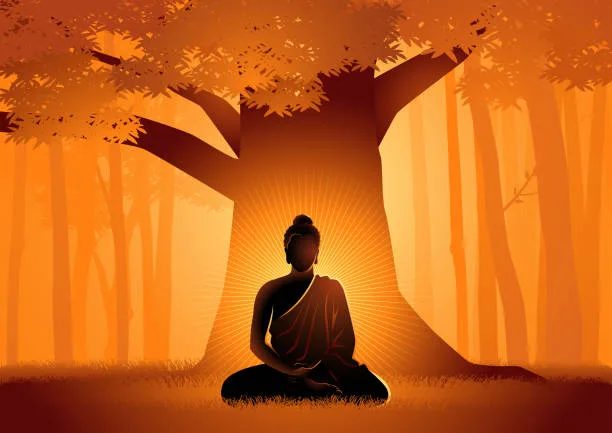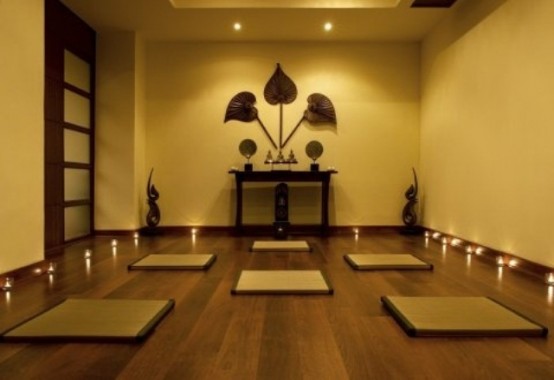
Vastu Shastra is an ancient Indian science of architecture and buildings that aids in the creation of a pleasant environment or a place to live and work in a scientific manner by utilising the benefits bestowed by nature, its elements, and energy fields for increased wealth, health, prosperity, and happiness.
What is Vastu Shastra?
Vastu shastra is a science that combines science, art, astronomy, and astrology. It can also be considered an ancient Mystic science for designing and building. Also It teaches us how to improve our lives and keep things from going wrong, Vastu Shastra is a multidimensional Science that includes various forms o Arts, directional and positional aspects.
it is a science of directions that combines all of nature’s five elements and balances them with man and material.
Vastu shastra is the most scientific way of creating a congenial setting for a place to live or work, beginning with the five elements of nature known as Panchabhutas, paving the way for improved health, wealth, prosperity, and happiness in an enlightened environment.
What Our Sages and Munis Says
Our Sages and seers understood the utility of Panchabhutas and the secret of utilising all five elements of this universe and their unique characteristics and influences such as the Earth’s magnetic field, gravitational effects, and so on, the galaxy in the sky and the directions and velocity of the winds, the Sun’s light and heat, including the effect of UltraViolet and InfraRed rays.
Using geometric patterns (yantra), symmetry, and directional alignments, the designs aim to integrate architecture with nature, the relative functions of various parts of the structure, and ancient beliefs.
Vastu Shastra is the textual component of Vastu Vidya, which is a broader knowledge of ancient Indian architecture and design theories. Rather, these ideas and concepts are models for the organisation of space and form within a building or collection of buildings, based on their functions in relation to one another, their usage, and the overall Vastu fabric.
The principles of ancient Vastu Shastra include those for the design of Mandir (Hindu temples), as well as those for the design and layout of houses, towns, cities, gardens, roads, waterworks, shops, and other public areas.
Is Vastu Shastra really that important to us?
Vastu Shastra plays an important role in our lives. Though some people have misconceptions about the architecture, this does not diminish its importance in any way. Vastu is more than just a building science; it is a link to the ancient Vedic science that promotes blissful living. Vastu is a term derived from a divine being known as the God of Vastu or Vaastu Purush.
It is the science of architecture based on its nature of promoting design concepts regarding direction-specific study associated with the foundation of a house/.building/plot/ or other structures. This theory validates the importance of Vastu as a primary contributor to our dwelling place by ensuring its happiness, peace, and a constant flow of positive cosmic energy throughout its surroundings so that occupants experience blissful living.
Vastu involves the mathematical calculation of a site’s direction-based attributes. Based on the data, the proper and ideal position of rooms, including the consideration of exit and entry passages, as well as the placement of furniture items, is determined using Vastu principles. These precautions later contribute to the affective well-being of the occupants of a Vastu-compliant house.
As a result, we can say that Vastu Shastra is very important for us, given how the principles of this science, when applied, bring growth, peace, prosperity, and well-being into our lives.
Is Vaastu Shastra truly effective?
Vastu Shastra is effective because of its relationship with the science of building a house or any structure to ensure that peace and harmony continue to flow in the property. This, in turn, benefits the property’s occupants or owners’ personal growth and success. The ultimate goal of applying Vastu Principles is to produce useful benefits for the occupants of a Vastu-compliant home.
The efficacy of Vastu science is that if its principles related to the direction of your rooms and the placement of household items are properly applied in conjunction with the suggestions of a Vastu expert, then useful benefits such as balancing positive cosmic energy around your surroundings, peaceful relationships and eternal prosperity, as well as success in your chosen endeavour, will occur in your life.
Vastu plays an important role in the construction of a building, ensuring the dimensional and character features of rooms in terms of length, size, and breadth, as well as ensuring that the property uses harmonious cosmic energy to its fullest potential. Vastu is effective when the construction of a building adheres to both traditional and modern perspectives while incorporating correct direction principles as suggested by Vastu science. Given that the application of Vastu is unavoidable due to the useful benefits it provides, it goes without saying that this science is productive in its entirety today.
Vastu Shastra’s Most Important Advantages:
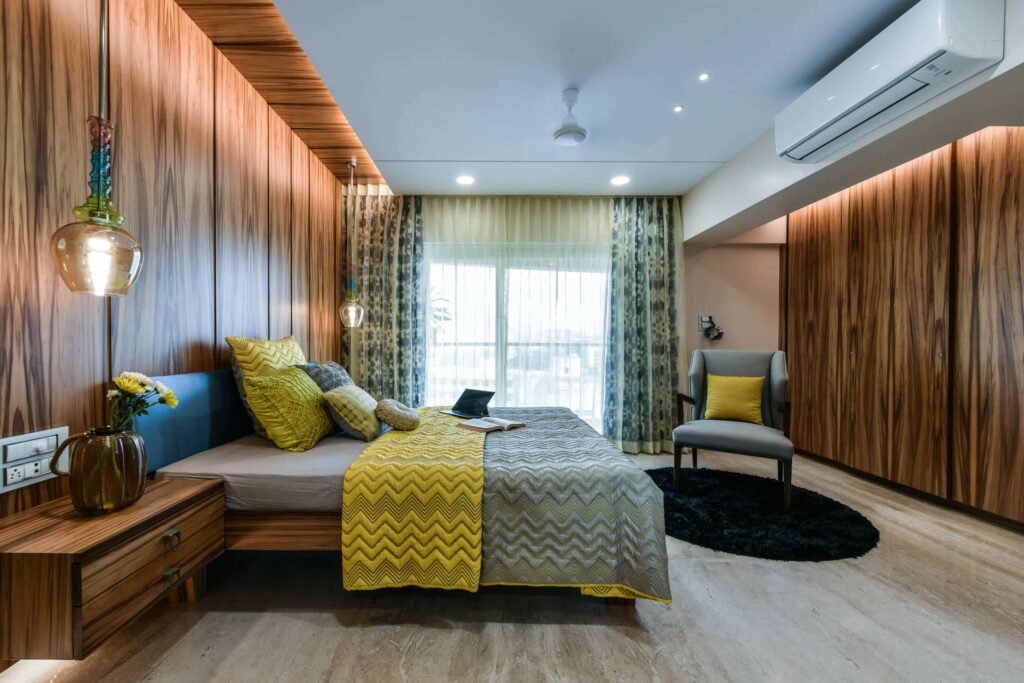
Vastu harmonises nature’s powerful energy sources such as the sun, moon, wind, light, thermal, earth, electric, magnetic, and cosmic energy. These energies, when harmonised by Vastu, provide the owner of living space with maximum benefits in terms of growth and perpetual prosperity.
Monetary blessing –
The correct application of Vastu principles in a house blesses its occupants with an abundance of wealth or financial happiness by unblocking your fate to golden opportunities and success. With the application of Vastu principles in your living space, you will experience financial dependence and security as well as exponential monetary growth.
Growth in your chosen endeavour –
Vastu science is an excellent remedial course for anything that is impeding your progress in your chosen endeavour. Following Vastu will help you expand your horizon, with growth and success coming in large measures in your chosen field of activity, whether you seek a promotion or success in your job/career or want to go the extra mile in your academic pursuit. This is the Vastu power that allows you to experience a series of golden opportunities in your life!
Keeps your relationship bond always strong –
One excellent contribution of Vastu Shastra to your relationship is that it acts as a great neutralising factor against every negative element that causes your relationship bond to fade and brittle. Experience a healthy relationship with improved family bonding with your relatives.
Brings happiness –
If you notice that your living space is a house of scuffle and misery, and it is no longer the harmonious space that it once was, it is due to Vastu flaws in your property. It’s past time you got rid of such flaws in order to resurrect lost happiness in your home, with every family member living happily together.
The points raised above clearly demonstrate that, while Vastu Shastra may not provide immediate benefits to your living space, its use is not a futile attempt to bring peace, prosperity, and an unending flow of positive energy into your life. All you have to do is consult a genuine Vastu expert, as there are many imposters in the market today who are more interested in profiting from your ignorance than in providing you with good Vastu advice.
Vastu Sashtra and its principles
This is a science of architecture that focuses on the direction of living space as well as combining all five elements of nature to create a conducive setting/atmosphere that allows the occupants to experience peace, prosperity, happiness, and good health.
Vastu is an ancient science of architecture that has its origins in the Vedas and works on the principle that the earth/soil is a living orgasm that cultivates a life form of creatures. It, also known as a dwelling place, is a space-creation mechanism. It connects a person’s life to the time cycle.
Vastu Principles:
Orientation that determines direction-related facts to allow living space to maximise cosmic energy force of five elements.
Site planning is associated with design layout concepts that are applicable in the construction of living spaces.
Proportion measurement to ensure dimensional harmony of a property in terms of length, width, and depth, as well as thickness and interspace management.
Dimensions or architectural rules involve six components such as the foundation/base, column, entablature, wings, roof, and dome.
An aesthetic that ensures a building’s rhythmical character by ensuring the application of various factors, such as plot purchase consideration and construction-specific guides, among others.
Flow of Positive Energy
Because Vastu Shastra promotes the flow of positive energy, its starting point—the selection of the house property—is critical because it establishes the location and orientation of the living space. According to Vastu Shastra, any direction that a home faces—East, West, North, or South—is considered good because each has its own set of benefits.
The placement of the puja room affects prosperity and peace in the home. The placement of the furniture in a space can affect the energy balance, resulting in a positive or negative impact on health and mental peace.
Placing mirrors in different parts of the house can help with health and happiness. The placement of water is critical for maintaining good health and hygiene.
The colour palettes chosen for each room of the house can also have an effect on the mood or vibe in the space, and they can be chosen with a specific goal in mind.
How does Shaps Affect Vastu
Symmetrical or right-angled shaped plots, such as rectangles or squares, work well as Vastu conductors. These plot shapes aid in financial development, bringing prosperity and happiness to the home.
Irregular or curved shaped structures (oval, circular, or semi-circular) are not auspicious, according to ancient science, because they limit an individual’s growth and cause various health problems, losses, and a general lack of happiness in the house.
Vastu Shastra At Your Workplace.

Because finance is the heart and soul of any business, it is critical to establish an office in accordance with the guidelines prescribed by the ancient science of Vastu Shastra. While small businesses rely primarily on payment receipts and cash flow to maintain financial stability, large businesses have their own sources. To assist you in navigating pitfalls, the office should have decor items strategically placed to pave the way for prosperity and positivity at work.
According to Vastu experts, working in a peaceful and spirited environment is essential for success. As a result, the proper placement of decor items not only ensures financial prosperity but also improves a person’s overall well-being.
Office Vastu Shastra Recommendations.
Workplace Prosperity.
Entrepreneurs should sit facing the north, east, or north-east in their office, according to Vastu Shastra, as this is considered auspicious. Because the sun rises in the east, it is favourable for financial growth.
Entrepreneurs must make certain that their table or desk is rectangular in shape and made of high-quality wood. In the cabin, an irregularly shaped glass or metal table promotes confusion, stress, and detachment from work.
Entrepreneurs should keep their desks clear of clutter to avoid impeding financial success.
Marketing and sales professionals should sit in the northwest direction, with the seat facing northeast, to ensure that they are more proactive at work.
Accounting professionals should sit in the southeast corner of their office and face northeast for increased wealth.
Business leaders should occupy a cabin in the office’s western wing. They should face the northeast to improve their leadership abilities.
North and northeast are Vastu directions that are beneficial to financial prosperity. Lord Kubera, the god of wealth, rules the northern hemisphere. According to Vastu Shastra, the north-east direction is governed by water, which is indicative of a person’s financial status. Some recommend placing a mirror or a Kuber Yantra on the northern wall of the office’s northern section to ensure better financial opportunities.
The placement of decor items on your work desk will not only ensure financial success but will also improve a person’s well-being.
Your Desk’s Shape.
Vastu Shastra for the office forbids the accumulation of finished goods (for product manufacturers) in front of the office desk in the northeast direction, as this creates obstacles. To ensure that finished goods are sold, they should be placed in the northwest direction.
Important financial documents should be kept in a safe built in the office’s southwest corner. To improve finances and overall prosperity, the safe should face the northeast.
Experts in Creating Energy Abundance at Work advise office workers, entrepreneurs, and businessmen not to sleep at their desks because it generates negative energy.
Keep your desks clear of clutter. Keep papers and books in a safe place. Sort documents based on their importance. Broken stationery should also be discarded in order to remove roadblocks to financial prosperity.
The office’s reception area
Visitors’ first impression is formed by the reception area. Reception, whether it is a client, employee, or visitor, plays an important role in portraying the nature and power of the company or organisation. As a result, the reception area should be very relaxing and positive.
The reception should ideally be built to face east or northeast. In addition, the reception area should have comfortable seating, and the receptionist should sit facing East or North. The company profile should ideally be displayed on the south wall of the reception area.
In addition, the reception desk should be diagonally aligned with the door. Decorating flowers and providing sweets in any way creates a positive atmosphere and good relationship value with visitors.
The office’s reception area leaves a lasting impression on first-time visitors. Placing a bouquet of French lavender flowers or green jade flowers on the reception desk will therefore surround the space with positivity, attracting prosperity. A four-leaf clover plant can be placed at the office’s entrance to bring good luck and fortune.
Employees must make certain that their backs are never turned toward a door in their cabins, as this will prevent them from seeing people enter. According to Vastu Shastra, this could lead to workplace distrust. To gain the trust of colleagues, place a picture of a mountain scenery behind the chair seat, as it encourages support. You can also place a turquoise pyramid on your desk to encourage better communication with your coworkers.
Vastu Shastra At Your House.
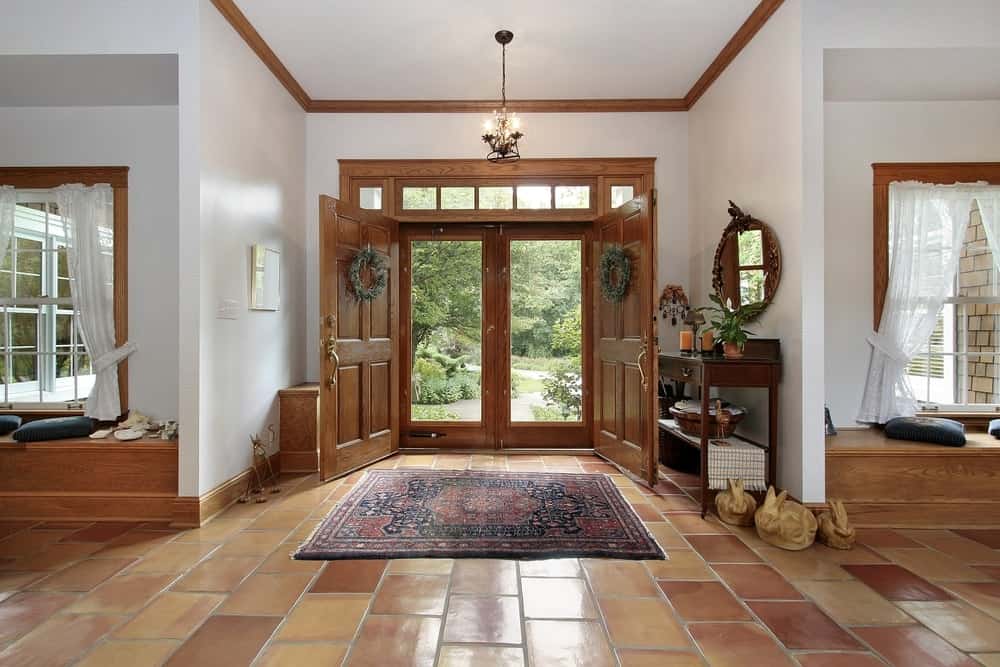
Vastu for a Happy Home
A house must radiate the right kind of energy in order to be considered a home. According to a variety of traditional beliefs, each home has its own type of energy. A person living in a house is subject to the influence of a specific energy field, which influences him in some way. As a result, it is critical to comprehend the relationship between the healing art of Vastu and our homes in cultivating positivity and good vibes.
With Ready-to-move-in houses in mind (where architectural changes are not possible), Vastu expert Ashna Ddhannak, founder and owner of Enlightening Lifestyle, lists ways you can bring balance to your home.
Some key factors to follow.
1. Vastu Shastra for the Main Entrance: The Doorway.
The main entrance to a home, according to Vastu Shastra, is not only the entry point for the family, but also for energy.
According to Vastu, the main door should be built in such a way that when you step out, you face the northeast.
The main door, which is regarded as the “archway to victory and progress in life,” should face north, east, or northeast. It must be built in such a way that when you step outside, you face north, east, or northeast.
The main door to your home should be made of high-quality wood. It should be taller and more appealing than the other doors in your home.
Outside the main door, avoid putting a fountain or any other decorative water-centric element.
Avoid putting a shoe rack or a garbage can outside the main door.
There should not be a restroom near the main entrance.
Make certain that the main entrance is well-lit.
Keep the main door from being painted black.
Animal statues or figurines should not be placed near the main door.
Make sure your main door opens clockwise.
2. Spirituality in Vastu for the Meditation Room.

Setting aside a room in the house for meditation and prayer will help you grow spiritually. It is always necessary for a person to reflect and connect with a higher power.
White, beige, light yellow or green are excellent colours for a meditation room.
Your home’s east or northeast corner is ideal for meditation, yoga, and other spiritual pursuits.
When you meditate, facing east will boost your positivity.
Make a sacred altar and embellish it with candles or incense sticks.
White, beige, light yellow and green are excellent colour choices for the room.
3. Vastu Shastra for the Living Room: Social.
The living room is where most of the action takes place in a house. When guests enter for social gatherings, it creates a favourable (or unfavourable) first impression. As a result, keep the living room clutter-free. This is a gathering place for the family to entertain friends and guests. The environment must be as harmonious as possible in order to provide a relaxed canvas for the development of positive and long-lasting relationships.
Choose a lighter or pastel colour palette for this room to instil calmness and affection. For peace, the North-East corner of the living room/drawing room should be clutter-free, however, the use of potted plants and paintings of nature or other pleasant scenes will enhance the tranquillity of the room and generate positive energy.
Decorating with or simply storing artificial or dried flowers in the room is considered unlucky and will attract negative energy.
Here are some more general guidelines to follow in order to make the living room Vastu-compliant:
The living room should be oriented to the east, north, or northeast. A north-west-facing living room is also advantageous.
Heavy furniture should be kept in the living room’s west or south-west corner.
All electronics and appliances should be installed in the living room’s southeast corner.
If the room has a mirror, make sure it’s on the north wall.
4. Vastu for the Courtyard: The Home’s Cosmic Center.
Brahmasthan is an ancient Indian architectural feature based on Vastu Shastra. It is the focal point of your home and is regarded as the holiest and most powerful zone.
According to Vastu, the courtyard is always at the centre of a traditional Kerala home because it is the Brahmasthan.
Here are a few pointers to ensure that the Brahmasthan emits an infinite amount of energy:
This area of your home should be spotless and free of clutter. The circumference of the Brahmasthan should be 1 to 1.5 metres without any obstructions or built-up area.
Negative energy is attracted by the placement of the kitchen, bathroom, or pillar/beam. This may have a negative impact on the health of your family members.
5. Vastu for the Bedroom: Maintain Balance.
To be harmonious and happy, the master bedroom should be built facing the South-West rather than the South-East, as this second direction is governed by the element of fire.
The bed should be positioned so that your head can rest to the south or east, as these directions bring good sleep and ensure a long life.
Mirrors should not be placed in the bedroom because they cause frequent squabbles among family members.
The smallest things can sometimes turn your fortunes around. Vastu Shastra explains how changing the layout of your bedroom can boost positive energy and even improve relationships between couples.
According to Vastu, paint your bedroom walls in neutral or earthy colours to radiate positive energy. Avoid using black paint on your walls. Consider using a softer colour palette for a Vastu-compliant style because this is a space to unwind, rest, and relax.
To avoid disturbing the room’s restful vibe, avoid using photographs depicting unrest, strife, or war, as well as anything that evokes unhappy or negative emotions.
6. The Kitchen’s Vastu Shastra.
The space where the home’s nourishment originates is also extremely important in Vastu homes to balance out the energies, as these can be passed on to the food cooked in here.
Never put the cooking stove or countertop hob right next to the sink (or other sources of water). The former employs fire, while the latter employs flowing water: both of these elements are constantly at odds with one another.
Avoid using black tiles or paint on the walls or on the furniture in this space; instead, choose bright, cheery colours that represent warmth and love.
Earthy colours, such as beige and ruddy, will also work well here because they represent stability.
Stick to natural stones for the countertop, such as granite or quartz, to stay grounded.
The position of the kitchen, the heart of the home, has a direct impact on the health and wealth of a family, whereas the interiors of a bedroom have an impact on the health, career, and personal life of the people who inhabit it.
7. The Bathroom’s Vastu Shastra
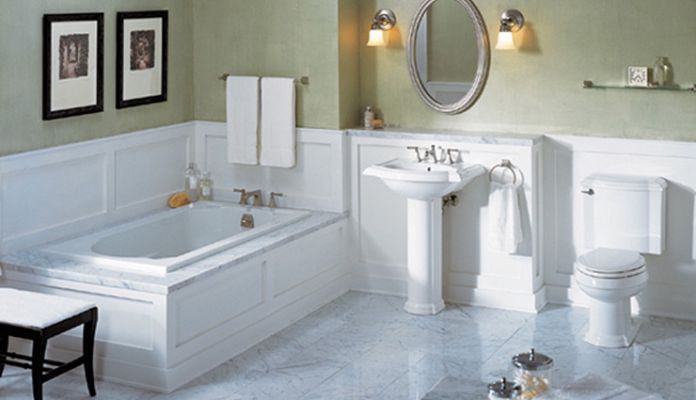
According to ancient science, the bathroom is the most neglected space in a home and can be a source of negative energy if it is dirty and in need of repairs.
The ideal location for the bathroom is in the northwest, which is intended to aid in waste elimination.
The entrance door should be made of solid wood rather than metal, as metal invites negativity and has a negative impact on your health.
When possible, keep the bathroom door closed (especially when not in use) to prevent energy from flowing from one room into another.
Do not adorn the bathroom door with decorative statues or religious symbols.
A bed that shares a wall with the toilet, as well as the kitchen and prayer room, may cause nightmares, as this is an auspicious sign.
Wet areas, such as washbasins and showers, must be located on the room’s east, north, and north-east sides.
The water outlet and drainage should be oriented north, east, or northeast, and the bathroom floor should slope in the same direction for water drainage.
The Children’s Room’s Vastu Shastra.
Your child’s room is a place of nurturing, growth, and development. This room should elicit as much love, warmth, happiness, and peaceful dreams as possible, according to Vastu Shastra for homes.
The kids’ bedroom door should open clockwise and be free of any boards or signage, as these can foster negative energy, such as ego clashes, aggression, and fights between children and their parents.
Avoid placing the bed in front of a mirror, window, or door to avoid insomnia or hypertension. Mirrors, in particular, are known to drain positive energy from a room and can sometimes cause the mind to wander, which is detrimental to the child’s peaceful sleep.
Unused stationery, such as pens without refills, unsharpened pencils, torn books, old books, or newspapers, should always be discarded because they attract negative vibrations. For a clear path to success, the study table or desk should be clutter-free. Avoid putting shoes or slippers under the table because it interferes with concentration.
Bookshelves on the north-east side of the room should always be made of wood rather than metal.
Here are 5 tips for changing the energy ratios in your bedroom to improve your sleep:
Ideally, a bedroom facing south-west brings good health and prosperity. Avoid placing a bedroom in the north-east or south-east zone of the house, as the former may cause health issues, while the latter may cause quarrels between couples.
- Place the bed in the southwest corner of the room, with your head facing west.
- Place a mirror or television away from the bed. When you are in bed, you should not look in the mirror because it causes fights and other domestic disruptions.
- Paint your bedroom walls in neutral or earthy tones to create a positive energy flow. Avoid using black paint on your walls.
- A temple, paintings depicting water, or a fountain in the bedroom should be avoided as they may cause emotional outbursts.
- To create an oasis of calm, use mood lighting and aromatic oils.
When we plan home renovations, we want to create a space that reflects our personal habits and style. Whether our designs are maximalist and ultra-chic or functional and utilitarian, the main goal is to bring happiness into the spaces we live in, and a large part of happiness revolves around positivity.
Although some of us may not be well-versed in Vastu Shastra, a traditional Indian science of architecture that dates back thousands of years, we are all familiar with the term and have probably come across homes built around its principles.
Wrapping Up.
Vastu Shastra, which literally translates to “the science of architecture,” lays out the principles of design, layout, measurements, ground preparation, space arrangement, and spatial geometry for a home or any built-up structure; sometimes incorporating traditional Hindu (and even Buddhist) religious beliefs, Vastu theories provide ideas and concepts for making a living space harmonious with nature.

Vastu Shastra ideas and concepts are models for the organisation of space and form within a room or a collection of rooms or structures, based on their functions in relation to one another, as well as their purpose and usage.
While Vastu Shastra provides advice and guidelines for the design of all rooms in a home, including the bedroom, kitchen, living room, playroom, home office, prayer room, and outdoor spaces, its science has also been used in the construction of cities, townships, gardens, roads, waterworks, and other large public areas.
Vastu Shastra considers a house to be a living soul and strives to achieve the maximum level of positive energy by balancing the five elements (earth, fire, water, space, and air). Each home or living space has its own energy, and in order for a home to be harmonious and happy, it must radiate the right type of energy. At the end of the day, it is the energy of the home that will determine its success.
Note: Contact our Writers at www.eastsidewriters.com for writing Blogs/Articles on any niche. We have experts in various domains from Technology to Finance and from Spirituality to Lifestyle and Entertainment.
Originally posted 2021-07-12 09:04:02.






